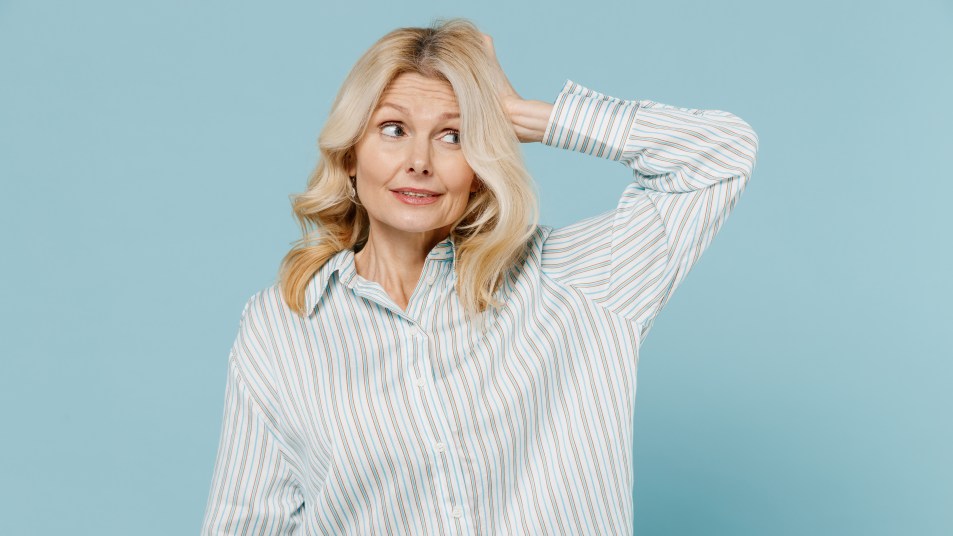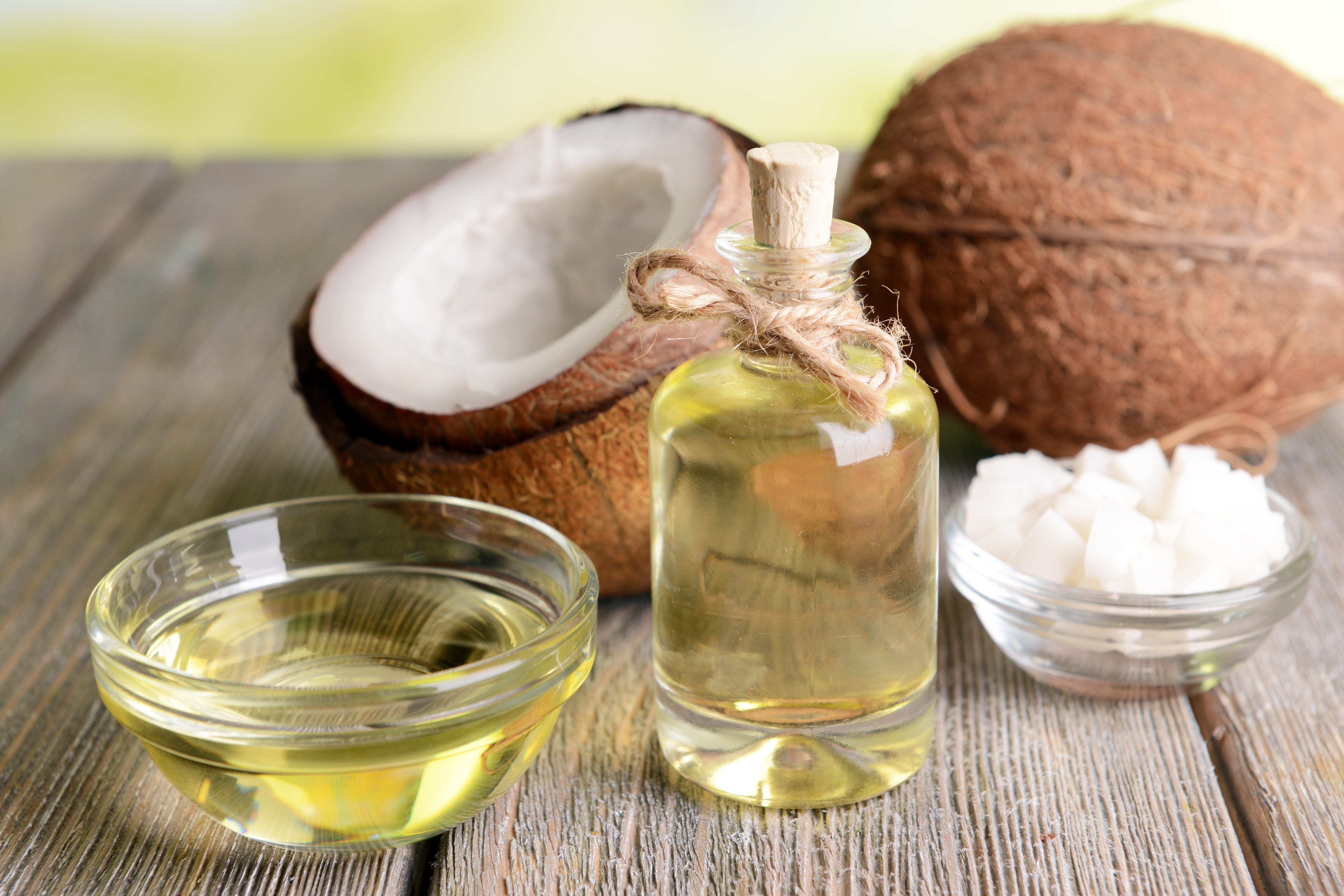Dandruff vs Dry Scalp: Find Out Which One is Making You Itch — And How To Cure It
Dermatologists: the secret to telling the difference lies in your skin type

Notice unflattering chunks of white flakes sitting on your scalp or stuck between your strands? It’s bad enough when you see them, but it’s really embarrassing when those white flakes have fallen from your hair and landed on the shoulders of your black shirt. Not to mention the constant head scratching. Surprisingly, the scratching and the flakes are symptoms of two similar but very different scalp conditions: dandruff vs dry scalp. And while they appear almost identical, the reasons and the solutions are not the same.
Luckily, there’s no need to scratch your head (we couldn’t resist!) wondering which side you fall on in the game of dandruff vs scalp. Read on to discover the difference and the easy remedies for each.
Dandruff vs dry scalp, what’s the difference?
What is dandruff?
If you tend to have oily skin, chances are your flakes are a result of dandruff.
“The scalp is one of the oiliest parts of the body, having a denser amount of oil glands than other areas, explains Rachel Nazarian, MD, FAAD, a board-certified dermatologist in New York City. When you have a very oily scalp it can result in seborrheic dermatitis, the itchy, scaly, inflamed condition.
“This inflammatory response can be sensed as itching,” explains Beverly Hills-based dermatologist Vicki Rapaport, MD. “Then dandruff, typically presenting itself in large, oily flakes that are either white or yellow, is the result of all the scratching that causes dead skin to not only get all over your clothes, but to get stuck in your hair or just sit loose on the scalp.”
What causes dandruff?
According to the International Journal of Trichology, dandruff affects more than 50 percent of the adult population worldwide. The Mayo Clinic explains that a yeast-like fungus that feeds on the excess oil on our scalps can be a root cause, as well as other skin diseases you may already be diagnosed with, such as eczema or psoriasis, which can make you more prone to developing dandruff.
“This fungus, called Malassezia Furfur, grows naturally on the scalp. In most people, the fungus causes no symptoms, but some respond by getting dandruff,” says PRP, exosomes, hair loss, regenerative expert and co-founder of WeThrivv Sanjay Batra, Ph.D.
Also to blame for dandruff?
- Genetics, dirty hair or a buildup from overuse of products are among the common culprits of the flaky scalp ailment.
- Hormones. Women over 50 can see an even larger occurrence of the condition thanks to a lack of estrogen during menopause. Estrogen is the hormone responsible for sebum production in the scalp.
- Diseases such as Parkinson’s disease and immune-weakening illnesses like HIV can trigger the condition as well.
- Your diet. “A diet high in refined white sugars and carbs increases insulin levels which can affect hormones, causing them to stimulate more oil gland production. In addition, too much sugar in the system stimulates inflammation, which may be exactly what the yeast of the microbiome feeds on,” explains Dr. Rapaport
What is dry scalp?
If you tend towards dry skin all year long, chances are your flakes are a result of a dry scalp.
“This is different than dandruff as it is not related to increased production of oil and yeast on the skin, “attests Dr. Rapaport. “It’s the exact opposite. It’s due to dry skin on the scalp that doesn’t have the right moisture barrier.”
What causes dry scalp?
A dry scalp is more common in people with overall dry skin. Aging, the weather and dryness-inducing haircare products can all trigger this pesky disorder, explains the Cleveland Clinic. “In the winter especially, or if you live in a colder climate year-round, the humidity level drops, and the air is colder and drier; this drop in humidity and increase in cold air makes the skin dry and flaky,” explains Debra Jaliman M.D., board-certified dermatologist and author of Skin Rules: Trade Secrets from a Top New York Dermatologist. “Over-washing your hair can also cause a dry and itchy scalp.”
Dandruff vs dry scalp: how to remedy both
No matter which condition you have, there are many affordable at-home remedies to soothe the itch and get rid of the flakes .
To combat dandruff
Once you get a bout of dandruff, it often sticks with you for life. However, there are many ways to provide relief to the itchy, flaky condition while also keeping it at bay.
Tea Tree Oil: The oil is know for its anti-inflammatory and anti-fungal properties, enabling it to
kill yeasts associated with seborrheic dermatitis, as well as fungus like athlete’s foot and other skin issues.
To use: Simply mix 3 drops of tea tree oil and 1 Tbs. of coconut oil (it moisturizes). Rub onto a damp scalp for 2 minutes, then rinse.
Apple Cider Vinegar (ACV): The kitchen staple has anti-bacterial and anti-fungal properties. “Apple Cider Vinegar contains malic acid, which helps balance the scalp’s pH. Using a mix of ACV diluted with water will help to avoid this fungal build-up on the scalp,” attests Dr. Jaliman. The video below explains just how easy it is to use!
Lemon Juice: The acids in the citrusy juice gently break down the natural yeast causing the dandruff.
To use: Before bed, warm 1/4 cup olive oil (it soothes the scalp) and 1 tsp. lemon juice in the microwave. When the mixture is comfortable to the touch, dip in the pads of your fingertips, then massage the lemony mixture over your scalp. Place a towel on your pillowcase and head for bed. In the morning, shampoo and condition as usual—and enjoy a soothed scalp and super shiny, flake-free hair!
Pyrithione Zinc: In addition to easing inflammation and flakes and killing yeast, pyrithione zinc is a humectant that supports skin healing.
Find it in: A shampoo like Dove Dermacare Scalp Anti-Dandruff Shampoo Dryness & Itch Relief (Buy from Amazon, $4.88). “The shampoo is pH balanced to gently cleanse the scalp and hair, with moisturizing ingredients like coconut oil, shea butter, and sunflower seed oil,” says Dr. Jaliman.
To repair a dry scalp
You can get rid of dry scalp for good with these DIY and drugstore remedies.
Coconut Oil: The moisturizing and anti-inflammatory oil contains fatty acids that erase irritation and hydrates scalp skin.

To use: After shampooing as usual, massage a spoonful of coconut oil into your scalp, then comb it through to lightly coat your hair. Cover with a shower cap. Relax for 15 minutes, then rinse as usual.
In a rush? Rub in a few drops without rinsing for a natural leave-in treatment.
Avocado: The fruit’s omega-3 fatty acids penetrate the layers of scalp skin to replenish moisture while its vitamin E helps repair skin’s barrier to lock that moisture in. Bonus: Those same nutrients infuse locks with luster.
To do: Rub half a mashed avocado onto damp hair from roots to ends, cover with a shower cap for 30 minutes then rinse.
Hyaluronic acid: The acid, produced naturally by our bodies, holds 1,000 times its weight in water, which is why pros recommend using a shampoo infused with the “miracle molecule” to soothe a flaky scalp. It keeps follicles moisturized, which wards off the dryness that’s the root cause of flakes, says hairstylist Lucy Garcia Planck of Sharon Dorram Color at Sally Hershberger Salon in New York City, so your scalp and hair stay healthy!
Find it in : L’Oreal Power Moisture Hydrating Shampoo (Buy from Amazon, $12.95).
One thing you shouldn’t do whether you have dandruff or dry scalp? Experts advise against picking at your scalp, which can irritate it further. As hard as it is, resist the urge to scratch.

Jené Luciani Sena is a veteran journalist and internationally-renowned bestselling author of The Bra Book: An Intimate Guide to Finding the Right Bra, Shapewear, Swimsuit, and More! and Get It!: A Beauty, Style, and Wellness Guide to Getting Your #It# Together. She’s also a style, bra and beauty expert regularly seen on shows like Access Hollywood and NBC’s Today.
















